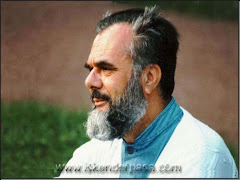It's Christmas eve and I should be enjoying my holidays in Tokyo. It's winter here and Christmas is little more than a retailing gimmick. Christians are a minority in this largely Buddhist/Shinto nation. Churches are about as common as mosques.
In this part of the world, no one seems to have the same hangups that Australians do about security and terrorism and all that stuff. The biggest security threats are China and North Korea. Muslims are more known as expat workers or tourists, just as Christians (and Jews) are.
While I've been here, my friends in Australia have had to content with a large terror-related raid in Melbourne. The alleged plot was to attack St Paul's Cathedral in the heart of the city.
I'm not sure how many Muslims:
a) understand the significance of St Paul's Cathedral
b) appreciate the timing of an attack on Midnight Mass or a late night service
c) are aware of the kinds of people who attend such services
I attended an Anglican Cathedral school in Sydney. A cathedral is the main church in a region or city. It is almost always the largest church in size and capacity, and is usually built and designed in the most ornate fashion. Australian Christianity is just over 200 years old, but our cathedrals are modeled on European structures much older.
An attack on St Paul's Cathedral i Melbourne would be the equivalent of an attack by Christian or Hindu extremists in Indonesia on Masjid Istiqlal. Or an attack in Lahore on Badshahi Masjid. Or an attack in Sarajevo on the Gazi Husrev Beg Cami.
Stand opposite St Paul's Cathedral on Flinders Street and you will see a large placard that reads "Refugees Welcome Here". Refugees from all across the globe. Largely Muslim refugees. This Anglican institution opens its doors to the most vulnerable Muslims.
Speaking of Anglicanism and the Anglican Church, I spent a afew monthss working as a solicitor for Anglicare in a poor town in the La Trobe Valley. Anglicare offices provide services to people of all denominations including Muslims. Anglicare hires Muslim staff. I went to an Anglicare Christmas event for foster kids and their families. There were lots of women there in hijabs, all Angliicare clients.
Anyway, getting back to Midnight Mass, an event I've attended on plenty of occasions in Sydney (though admittedly at St Mary's Catholic Cathedral). The Anglican church (also known as the Church of England) remains the dominant church in Australia, though like other established churches it is facing stiff competition from charismatic churches such as Hillsong.
But the Anglican church's fastest growth is not in Australia. Instead it is in Africa, in countries like Kenya and Nigeria and South Sudan. There are significant Anglican communions in Pakistan and India. When I started school, the school captain was a Pakistani Christian whose father was an Anglican priest.
Midnight mass would attract Anglicans from across the ethnic and linguistic spectrum of Melbourne Anglicanism. An attack on this congregation would not have merely affected "rich white people". It would have hit poorer families, including refugee families from South Sudan and immigrants from Pakistan and Indonesia.
I've often been stunned at the variety of costumes worn at Midnight Mass. Women decked out in saris and shalwar kameez and other cultural dress from Kenya and Vietnam.
Imagine if an attack had gone ahead. The casualties would have been enormous. People from across Australia's multicultural spectrum would have been hurt. And all on Christmas, a time of celebration and worship and families and goodwill and peace on earth.
But as we all know, ISIL love attacking big targets, whether a large crowd in Istanbul or Karachi or Iraq or Syria or Tunisia. Whether Eid or Ramadan or Ashura, ISIL have no respect for holidays or sacred days or worshippers or mosques or shrines. Why would they care about our church services and congregations?














